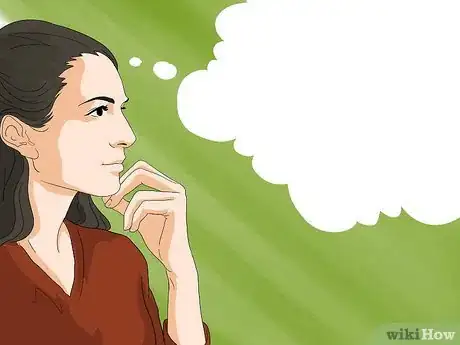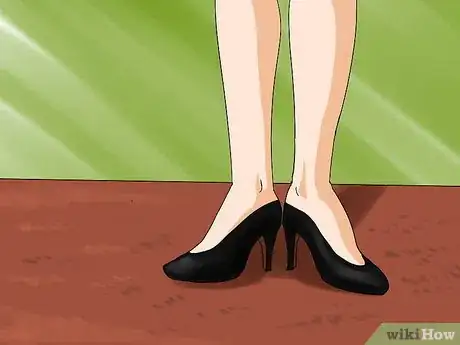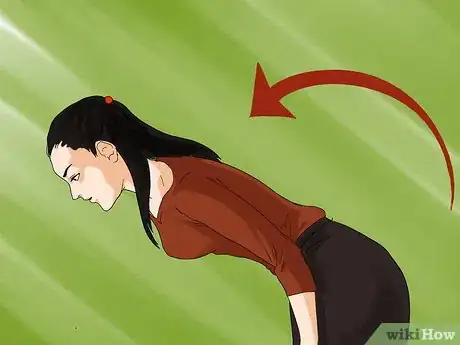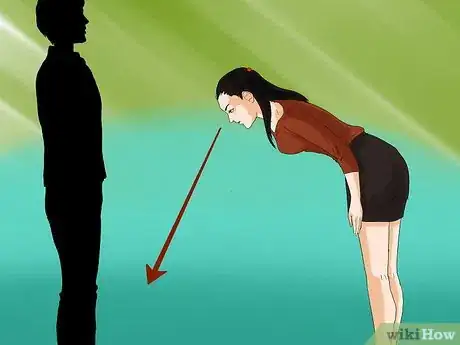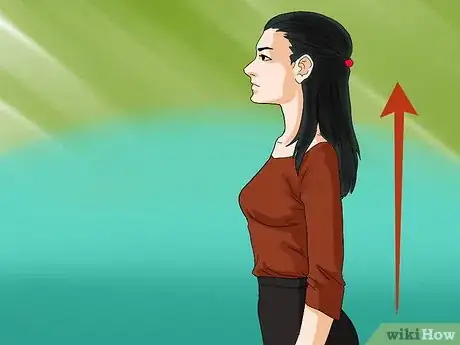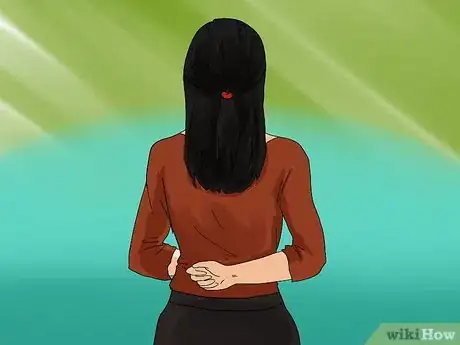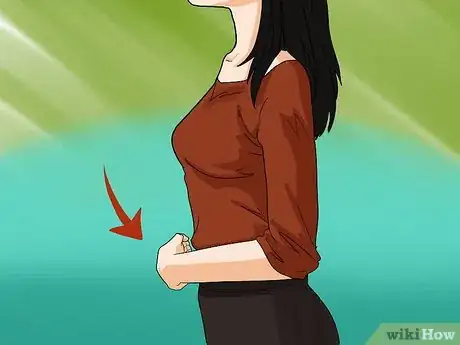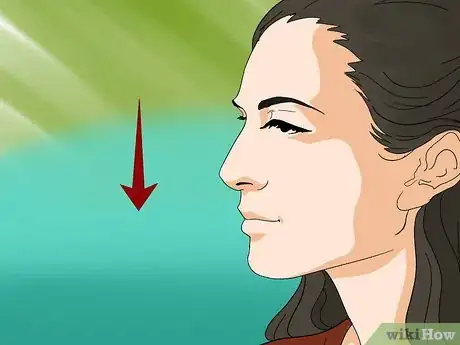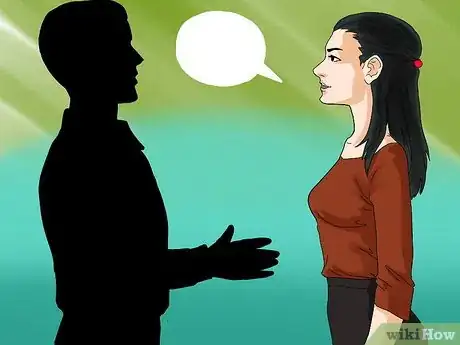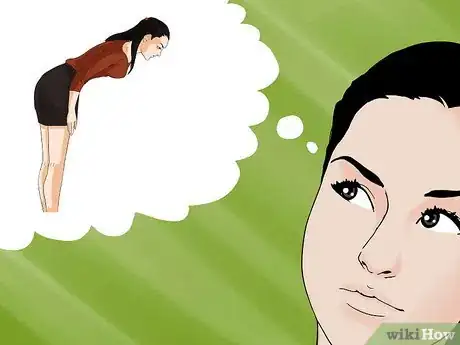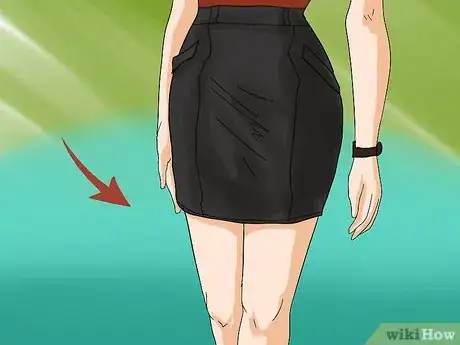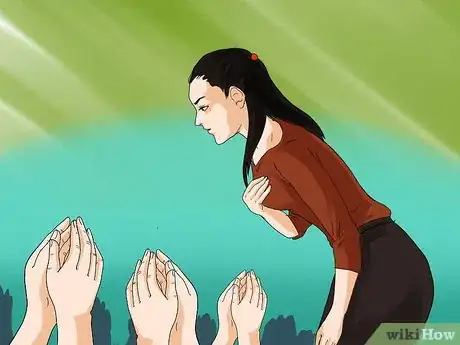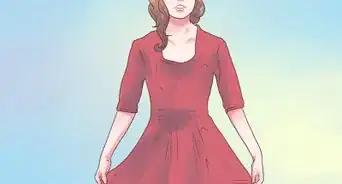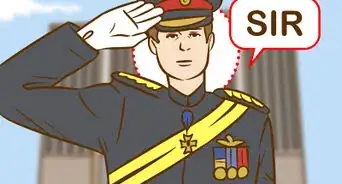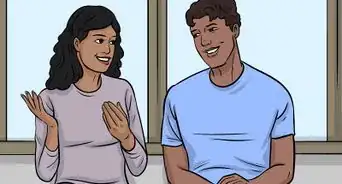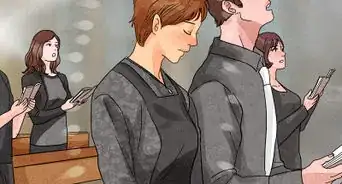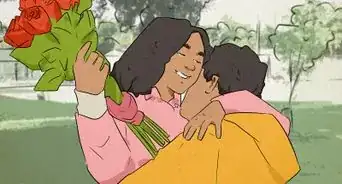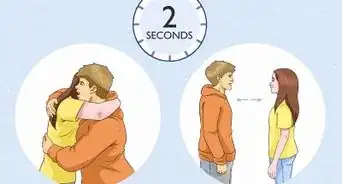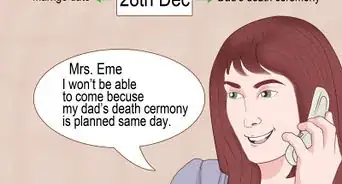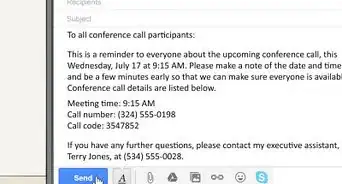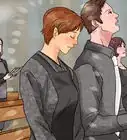This article was co-authored by Tami Claytor. Tami Claytor is an Etiquette Coach, Image Consultant, and the Owner of Always Appropriate Image and Etiquette Consulting in New York, New York. With over 20 years of experience, Tami specializes in teaching etiquette classes to individuals, students, companies, and community organizations. Tami has spent decades studying cultures through her extensive travels across five continents and has created cultural diversity workshops to promote social justice and cross-cultural awareness. She holds a BA in Economics with a concentration in International Relations from Clark University. Tami studied at the Ophelia DeVore School of Charm and the Fashion Institute of Technology, where she earned her Image Consultant Certification.
This article has been viewed 139,105 times.
Bowing is a traditional way to show respect in many cultures. If you are trying to show respect for the tradition, it is important that you know when to bow and when not to bow. Each culture has its own unique rituals associated with proper bowing, and these nuances may not apply in another country. Do your research before you bow, and watch the locals.
Steps
Bowing in Asian Culture
-
1Know when to bow. Bowing is typically used in Asian cultures to show respect, honor, or gratitude. A silent bow often replaces the phrase "Thank you." In Asian cultures, you should bow from the hip with your head pointed down. Polite bowing is still common in many Asian countries, but it is not practiced as strictly in America. Understand the culture around you—or the culture of the people around you—to determine if bowing is appropriate.[1]
- Bowing is prevalent to varying degrees in many East Asian countries, but it is most prominent in China, Korea, Taiwan, Japan, and Vietnam. Various nuanced bows are used to express apologies, gratitude, sincerity, deference, and remorse, among other things.
- The handshake has become a common greeting in many East Asian cultures, particularly in business circles. Bowing may not be appropriate when you first meet someone—especially if he or she is a peer—but it can be a versatile way to convey more complex emotions. A slight bow to show courtesy is usually welcome.[2]
-
2Assume the bowing stance. Stand straight with your feet together, forming a V with your heels. Clench your hands at your sides, but not too tight.Advertisement
-
3Bow with your waist, not your neck. Bend at the waist, but keep your back straight. Open your hands as you bend. Bring your feet together.
-
4Avert your gaze to show respect. If you are bowing to an elder, a superior, or someone you respect, look down at their feet when you bow. If you're bowing to someone who does not fit into any of these categories, feel free to look them directly in the eye.[3]
- Bear in mind that if you look someone in the eyes, it may be taken as a sign of disrespect. This is especially the case when bowing to older, more traditionally-minded people, especially those who grew up steeped in an East Asian culture. Carefully consider the situation, and be mindful of who you are bowing to.
-
5Finish the bow. Straighten up, close your hands, and split your feet back into the V. Feel free to make eye contact with the person to whom you bowed.
Bowing in Western Culture
-
1Know when to bow. Bowing evolved as a traditional sign of respect and acknowledgement in many Western cultures, but it is much less common than it once was. You may still bow to show respect, or to add a dramatic flourish to a situation, but the gesture will appear a bit outdated. That said, bowing is still generally regarded as a polite gesture.
- Bowing in western culture is often accompanied by an air of mock formality, and perhaps a degree of ironic self-consciousness. The European-American ceremonial bow is largely an anachronistic gesture, so bear in mind that you may not be taken seriously.
- Try owning the mock formality of the bow by playing with nuance and taking the gesture to the extreme. Bow very slowly and deeply to show sarcasm—something like a slow clap. Bow very quickly and politely to convey mock deference.
-
2Put your left hand behind your back. Bend your arm at the elbow, and rest your hand (palm out( at waist-level. Alternately, press your left hand across your abdomen.
-
3Bring your right hand to your waist. Bend your arm at the elbow. Hold your palm against your body while you tip your upper body forward. The lower you bend, the more respect you show.
- If you are wearing a hat, remove it and hold it by the brim in your right hand. If you are in a situation that calls for extreme deference—say, a funeral, or the performance of a national anthem—tuck your hat under your arm until the moment passes.
-
4Keep your eyes lowered. Do not raise your chin to maintain eye contact—this may be taken as a sign of disrespect. This is, however, a tradition that evolved from a highly stratified feudal society, so do not expect most 21st-century people to take offense if you make eye contact or bow "incorrectly".
-
5Stand up in one fluid motion. Straighten your back. Drop your hands. Raise your eyes to meet the gaze of the person to whom you bowed, and proceed to speak with them.
Bowing in Other Situations
-
1Bow in a corporate setting. Bow to denote respect, as you would in a non-corporate situation, but be especially mindful of the rank of those to whom you bow. Japanese culture is highly hierarchical, meaning that that older people have higher social status than younger people, men usually have more status than women, and senior executives demand more respect than junior executives.[4]
- Japanese businessmen often exchange business cards before bowing or shaking hands. Make sure that your business card clearly states your rank—this will determine who your negotiating counterpart should be.
- If you are bowing to someone who ranks higher than you in his/her respective company, make sure to avert your gaze to show respect. Bear in mind that higher-ranking individuals may not bow back—bowing is often a one-way gesture in practice.
-
2Consider curtsying if you are wearing a skirt or dress. Cross your legs and ankles while standing, then bend your knees slightly. Lift the fabric of your dress out to your sides. This is a traditional European and American way of showing deference, but its use has declined sharply over the past century.
- Curtsy in any situation that might call for a bow. As with bowing, the curtsy is still regarded as a polite gesture, but it will come across as a bit outdated.
-
3Bow for an audience. In Western culture, it is common to bow after a speech or performance to acknowledge the applause of the crowd. As your audience claps (or snaps, cheers, etc.), put your right hand on the center of your chest. Breathe in deeply. Bend your back. Briefly bow your head, then stand back up.
- Do not bow for too long, nor too quickly. Bow for 3-5 seconds, but do not let it drag on.
- Stand still. Do not shuffle about while you bow.
Expert Q&A
Did you know you can get expert answers for this article?
Unlock expert answers by supporting wikiHow
-
QuestionWhen is it appropriate to bow?
 Tami ClaytorTami Claytor is an Etiquette Coach, Image Consultant, and the Owner of Always Appropriate Image and Etiquette Consulting in New York, New York. With over 20 years of experience, Tami specializes in teaching etiquette classes to individuals, students, companies, and community organizations. Tami has spent decades studying cultures through her extensive travels across five continents and has created cultural diversity workshops to promote social justice and cross-cultural awareness. She holds a BA in Economics with a concentration in International Relations from Clark University. Tami studied at the Ophelia DeVore School of Charm and the Fashion Institute of Technology, where she earned her Image Consultant Certification.
Tami ClaytorTami Claytor is an Etiquette Coach, Image Consultant, and the Owner of Always Appropriate Image and Etiquette Consulting in New York, New York. With over 20 years of experience, Tami specializes in teaching etiquette classes to individuals, students, companies, and community organizations. Tami has spent decades studying cultures through her extensive travels across five continents and has created cultural diversity workshops to promote social justice and cross-cultural awareness. She holds a BA in Economics with a concentration in International Relations from Clark University. Tami studied at the Ophelia DeVore School of Charm and the Fashion Institute of Technology, where she earned her Image Consultant Certification.
Etiquette Coach That's really a cultural custom. In the US, we don't bow to greet people, we shake hands. In Japan, it's appropriate to bow when you greet people. However, if you're in the US and you're meeting with a high-ranking Japanese official, it would be appropriate to bow to show respect to that person's culture.
That's really a cultural custom. In the US, we don't bow to greet people, we shake hands. In Japan, it's appropriate to bow when you greet people. However, if you're in the US and you're meeting with a high-ranking Japanese official, it would be appropriate to bow to show respect to that person's culture. -
QuestionHow can I curtsy as a male?
 Tom De BackerTop AnswererWhen you look up the definition of 'to curtsy', it says it's a woman's formal greeting. So, by definition, men cannot curtsy. It also says it's the female equivalent of a man's greeting when he bows. So if you, a man, want to curtsy, you bow. Or genuflect, which is sitting down on one knee. But hey, if you want to curtsy, go for it.
Tom De BackerTop AnswererWhen you look up the definition of 'to curtsy', it says it's a woman's formal greeting. So, by definition, men cannot curtsy. It also says it's the female equivalent of a man's greeting when he bows. So if you, a man, want to curtsy, you bow. Or genuflect, which is sitting down on one knee. But hey, if you want to curtsy, go for it. -
QuestionWhat is the origin of the bowing style where people use one hand and move it downward in several spiral motions?
 Tom De BackerTop AnswererOpening one arm to the side, fingers closed and palm facing the other person, is a gesture of peaceful intentions: "Look, I have no weapons in my hands or coat", "I surrender to your will", or "Thank you for your benevolent kindness." Making the spirals that you ask about is the equivalent of saying "Thank you very very very much." It's a way of emphasizing what you mean, but it quickly gets un-creative if you repeat it too often.
Tom De BackerTop AnswererOpening one arm to the side, fingers closed and palm facing the other person, is a gesture of peaceful intentions: "Look, I have no weapons in my hands or coat", "I surrender to your will", or "Thank you for your benevolent kindness." Making the spirals that you ask about is the equivalent of saying "Thank you very very very much." It's a way of emphasizing what you mean, but it quickly gets un-creative if you repeat it too often.
Warnings
- Make sure not to tip yourself too much. Don't lose your balance!⧼thumbs_response⧽
- Beware of people bowing back. Stand far enough away that you don't bump heads.⧼thumbs_response⧽
References
- ↑ Tami Claytor. Etiquette Coach. Expert Interview. 29 September 2020.
- ↑ http://www.ediplomat.com/np/cultural_etiquette/ce_cn.htm
- ↑ http://gojapan.about.com/cs/etiquetteinjapan/a/bowing.htm
- ↑ http://www.ediplomat.com/np/cultural_etiquette/ce_jp.htm
